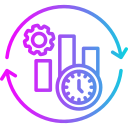A Mindset Shift: From Busywork to Value Creation
When automated systems shoulder routine tasks, your calendar becomes a canvas for creative, high-judgment work. Imagine redirecting countless micro-decisions toward strategy, relationships, and invention. Comment with one recurring task that drains energy and we’ll suggest a lightweight automation pathway.
A Mindset Shift: From Busywork to Value Creation
Status pings, file shuffling, and manual updates feel productive but rarely move the needle. Automation clarifies priorities by removing noisy steps. Share examples from your week, and let’s turn those moments into triggers for automated, reliable outcomes.



